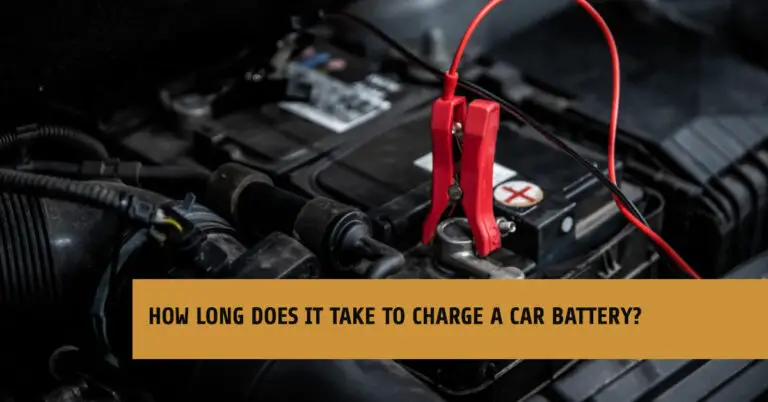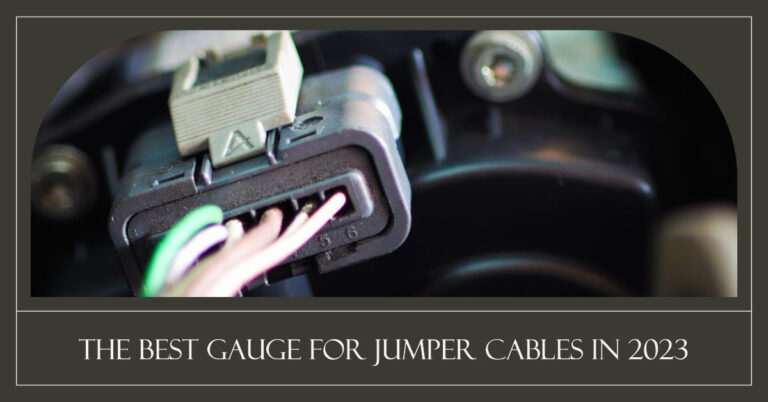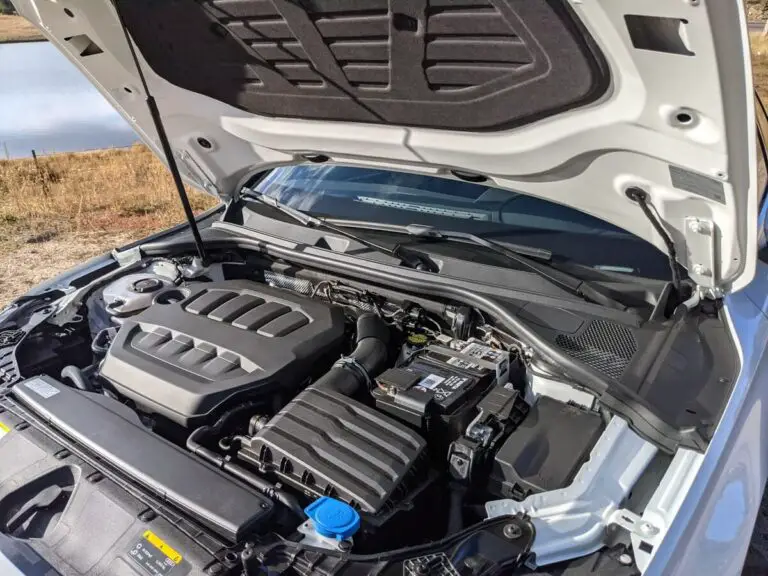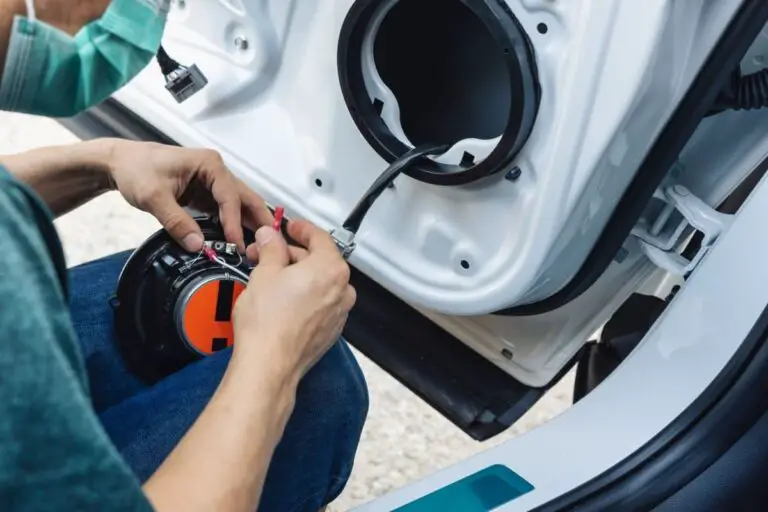Symptoms of a Bad ECU and Replacement Cost in 2024

Have you noticed some strange behavior with your vehicle lately, like sudden stalling, decreased fuel economy, or warning lights popping up on your dashboard? These could be signs that your engine control unit (ECU) – essentially your car’s computer that manages vital systems – may be faulty or failing.
The ECU is basically the brain that oversees your car’s engine and other important operations. So when the ECU starts malfunctioning, it can quickly create a cascade of problems. Most commonly, 5 key symptoms will show up. Keep reading to understand exactly what to watch out for so you know if your ECU needs replacement – and also what the typical replacement cost in 2023 would run you.
In short, the 5 most common symptoms of a bad or failing ECU are:
- An illuminated check engine warning light
- Engine misfires or occasional stalling
- Noticeably reduced car fuel economy
- Poor engine performance and power
- Various other dashboard warning lights and codes
If your ECU (also called an ECM – engine control module) starts exhibiting any of those warning signs, it likely needs to be replaced. While an ECU replacement job can be somewhat pricy with repair costs averaging $800 to $1,500 in 2023, paying that is typically much less than the risks of continuing to drive as problems accelerate.
Let’s explore what’s behind each of those 5 major symptoms of a bad engine control unit ECU in more detail:
Table of Contents
The Check Engine Light Comes On
Easily the most recognized warning of ECU problems is when your check engine light illuminates on the dashboard. This light specifically monitors your vehicle’s emissions control and engine management systems closely tied to ECU function.
Thousands of ECU error codes can trigger this key indicator. When faulty sensor readings, voltage irregularities, wiring issues or more exist, the ECU will detect a problem and activate the check engine light. Some potential causes include:
- Failed sensors: Critical engine management sensors connected to the ECU may stop functioning properly, unable to accurately gauge temperature, oxygen levels, throttle position, and more. This confuses the ECU’s ability to fine-tune the engine.
- Electrical and wiring faults: Damage in crucial wiring that connects systems to the ECU or power issues with fuses/relays can also indicate ECU trouble. Shorts can lead to false sensor values.
- Software flaws: The ECU relies on complex onboard programming to balance all its management roles. Software flaws or failures could require reprogramming/flashing the ECU.
- Mechanical engine issues: Not every check engine light is caused by ECU troubles. But serious mechanical problems can confuse the ECU’s ability to smoothly operate the engine.
In some instances the check engine light may turn off again on a faulty ECU (engine control unit). But don’t assume that means issues have resolved themselves. Consistently take any illuminated check engine warning light seriously, getting codes scanned to protect the engine and ECU. Catching problems early makes repairs much simpler.
Engine Misfiring or Stalling Issues
Another top symptom tied closely to potential ECU failure is when engine misfiring or stalling occurs.
The ECU is essentially the master computer responsible for ensuring your engine has the perfect air to fuel mixture for smooth, quality combustion. It continually adjusts based on data from oxygen and emissions sensors to prevent too much or too little fuel during operation.
When the ECU fails at that management properly, one result can be misfiring during acceleration. This makes the engine sound and feel rough, sputtering as you push the gas pedal. Stalling out completely may also start happening, where the engine cuts off and stops running during driving.
Some common causes behind ECU-related misfires and stalls include:
- Faulty spark timing: The ECU dictates precise spark timing to ignite fuel mixtures. Errors here, especially on multiple cylinders, lead to sputtering combustion.
- Misfiring fuel injectors: Similarly, even one clogged or damaged injector disrupting the ECU’s careful fuel calculations can cause misfires.
- Sensor failures: Bad crankshaft and camshaft sensors interfacing with the ECU could report incorrect piston positions, confusing spark timing.
- Voltage instability: Inconsistent power reaching ECU circuitry can really throw programmed engine management strategies off, allowing misfires or stalling.
Addressing engine misfires, hesitation, rough idling, or full stalling events should all prompt further diagnosis. There is often an underlying ECU (engine control module) failure causing those symptoms. Driving with persistent misfires risks catalytic converter damage or even total breakdowns.
Your Fuel Economy Suddenly Drops
Most drivers are quite familiar with their normal fuel economy performance in regular daily routes and styles of driving. When combined MPG and overall range per tank abruptly plummets, an ECU malfunction may very likely be to blame.
We know the engine control unit ECU plays central role in calibrating the precise mixtures of fuel and air feed into the engine using variable valve timing, MAF sensors, throttle position monitoring, and other strategies. The ECU tries to optimize this based on oxygen sensor feedback for max power while not wasting excess gasoline through over-rich blends.
But when the ECU’s input data or processing circuits start glitching, it can wind up miscalculating appropriate fueling rates. Often it overestimates needs. Suddenly way too much fuel gets dumped in, spiraling fuel economy numbers down.
Some specific scenarios where ECU troubles directly impact miles per gallon include:
- Leaky fuel injectors: Even one stuck open injector leaking extra fuel will disrupt ECU fuel trim management and reduce economy.
- Faulty MAF sensor: Mass airflow sensors gauge intake volume, which the ECU relies on to match ideal fuel. Bad MAF data confuses this fuel map.
- Worn oxygen sensors: Contaminated or dying oxygen sensors report skewed exhaust oxygen content to the ECU, leading it to improperly adjust fuel trims. Economy tanks.
- Base map issues: Corrupted processor memory storing initial fueling base maps from factory calibration will force the ECU to make bad gambles adjusting mixtures.
Pay attention if your MPG and tank range rapidly change for no clear reason. Scan for trouble codes and have the ECU inspected to potentially catch this signal of problems arising. Letting it go risks further drops plus long-term consequences of excess fuel like spark plug fouling or catalytic converter failure.
General Poor Engine Performance
Beyond just fuel economy, more holistic engine performance dependably degrades once your ECU (engine control unit) starts malfunctioning. Acceleration, overall responsiveness/power, and smoothness of operation commonly falter.
The ECU plays central role in so many interrelated engine management facets: maintaining timing curves for torque production as RPMs change, orchestrating camshaft adjustments for valve operation, regulating fuel and air feed proportions, governing idle quality, etc.
When this master decision maker falters, the engine’s overall output and driving experience suffers too. You may notice:
- Sluggish acceleration: Pressing the gas pedal leads to delayed, struggling engine power increase and compromised throttle response.
- Rough overall operation: Combined hesitation, sputtering misfires, uncontrolled changes in engine speed, and uneven power make the driving experience very rocky.
- High RPM/low power: The tachometer needle might race during acceleration but actual torque and performance fails to reflect expected output at those revolutions per minute (RPMs), indicating timing issues.
Don’t just assume you need a full engine rebuild if performance rapidly decays. Quite often, a struggling ECU (electronic control unit) unable to properly govern all systems is the real culprit. Diagnosing ECU troubles early on – indicated through poor acceleration, response times, idling, overall smoothness – can let you restore functionality faster via ECU repprogramming or replacement.
Various Dashboard Warning Lights Start Glowing
Beyond just the check engine indicator light directly tied to ECU status mentioned earlier, problems with an engine control module (ECM) can also spur multiple other dashboard warning symbols.
Lights indicating bad traction control, anti-lock brake failure, temperature or charging system alerts, and more could potentially surface. That’s because so many other vehicle systems network through or collaborate with that central ECU/ECM managing core drivetrain functionality.
Some examples where dashboard lights point towards ECU issues include:
- Traction control faults: ECU troubles could confuse its ability to detect and reduce tire slippage by governing engine power. So TC alerts show up.
- Transmission issues: Gear shifting and operation relies on ECU system data. Warning symbols get triggered by shifting delays or problems.
- Braking failure indicators: From ABS to brake pressure monitors, ECU electrical faults might impact automated braking integration and set off alerts.
So don’t ignore new warning lights beyond just check engine activation. Consider taking your vehicle to a certified mechanic for computerized ECU diagnostics if multiple alerts start popping up. Getting ahead of the root causes could minimize follow-on electrical glitches spreading deeper through intertwined automotive electronics networks.
At What Point Should a Bad ECU Be Replaced?
Identifying common symptoms like reduced performance, engine misfires, decreasing fuel economy, warning light activation and more gives clear signals your vehicle’s ECU may be having issues. But deciding exactly when you need to replace the failing engine control unit based on those warning signs takes a bit of judgment.
In general industry experts suggest considering ECU replacement when:
- Multiple symptoms negatively impact driveability and safety
- The check engine light remains steadily illuminated
- You’ve identified specific mechanical issues caused by ECU mismanagement, like repeated misfires causing catalytic converter damage
- Performance keeps degrading after attempted ECU recalibration, sensor replacements, etc.
- DIY troubleshooting reaches its limits of abilities/tools and problems continue
Basically if your ECU seems faulty – backed up through error code diagnosis – and problems progressively get worse, replacement is warranted. Catching issues early on while still limited to warning lights makes repairs cheaper. But allowing cascading failures risks destroying add-on components.
When an engine control module (ECU or ECM) truly does go bad, replacement costs average from $800 to $2,000 in 2023 for most domestic and import vehicles.
There’s no universal “mileage cap” where all ECU engine control units should get swapped as basic maintenance. But typically they last at least 150,000 to 200,000 miles before exhibiting issues described. Evaluate symptoms and determine if replacement is the next rational step. Don’t keep driving as performance exponentially decays.
What Does It Cost to Replace an ECU in 2023?
If you confirm through professional diagnosis, trouble code scans, and visible symptoms that your ECU or ECM needs replacement, about what repair bill can you expect in the 2023 model year?
General ECU replacement costs break down into a few main components:
- Labor time: 4-6 hours x shop hourly rate (averages $77 – $97 nationwide)
- Parts costs: $932 and $984 for new/remanufactured ECU
- Miscellaneous shop fees, taxes, disposal charges
That brings most total bills for ECU replacement to a range of roughly $6,000–$7,000 at certified auto repair facilities. Domestic vehicles from GM, Ford and Chrysler tend to wind up at the lower end of that spectrum. Many Japanese and European imports with more complex computerization hit higher estimates.
DIY ECU replacement at home using online part ordering and personal work could potentially save on labor fees. But extensive programming/configuration via dealer scan tools would still be required before safely driving the vehicle again. Trying that remains highly risky without training.
In general it’s smart to set aside $800 to $1500 on average when budgeting for complete ECU or ECM failure. Labor time varies based on vehicle ease-of-access and part costs swing widely depending on supply chain shortages. That gives sensible buffer room for most repair scenarios.
Is ECU Replacement DIY Realistic for Most Car Owners?
With the high quotes from professional auto mechanics, some drivers consider attempting DIY ECU replacement armed with repair manuals, online component ordering and determination. But while swapping an engine control unit might sound straightforward, many experts warn proceeding with extreme caution.
The risks revolving around an inexperienced DIY ECU installation include:
- Failure reprogramming the replacement ECU properly via dealer tools before the car will run again
- Damaging electronic connectors, sensors or wiring during the physical swap
- Installing an incompatible or defective used/refurbished ECU by mistake
- Losing engine computer memory programming and settings
Additionally ECUs and ECMs are often buried behind layers of plastic covers, brackets, looms and more. Just reaching your vehicle’s unit safely takes some skill.
Between affordable new OEM parts only available to shops and the programming hurdles, even most home mechanics avoid major engine computer control jobs. Pay the certified professionals to handle diagnosing issues, installing the upgraded replacement ECU, and configuring it to sync with your car unless you have expert-level training and software access.
Preventing ECU Failure in the First Place
Since replacing a worn or damaged ECU often costs upward of $800 to $1500 based on parts and labor these days, smart drivers try extending the engine control module’s lifespan through some proactive care.
Here are 5 top tips for helping your ECU or ECM avoid premature failure:
- Address check engine lights immediately: Quickly scan codes clear or repair minor issues before they cascade.
- Keep sensors maintained: Replace oxygen, crankshaft position, MAF and other sensors around their recommend intervals.
- Check for ECU firmware updates: New software revisions might fix nagging problems.
- Use high quality fuel and oils: This reduces operating stress and contaminant risks.
- Add protective wraps: Aftermarket heat/moisture shielding protects the ECU from temperature/debris damage.
No onboard computer lasts forever, but paying attention to engine diagnostics, monitoring warning lights, and focusing on preventative maintenance gives your ECU the best chance of hitting over 200,000 miles before replacement becomes necessary. That saves money while also preventing many roadside headaches the ECU helps avoid when operating properly.
Conclusion
In summary, a malfunctioning ECU that’s no longer properly governing your engine and drivetrain can quickly lead to degrading performance, lowered fuel economy, safety hazards from stalls, plus hundreds in diagnostic fees trying to keep issues contained.
Watch for the 5 major symptoms of a bad ECU covered here, especially the illuminated check engine light that directly indicates computer troubles. If you see engine misfires, sluggish acceleration, tank range dropping suddenly despite no driving habit changes, or bunch of new warning symbols appearing on the dashboard, don’t ignore those signs of potential failure.
Getting ahead of ECU problems before they snowball into damaged sensors, oxygen converter failures from raw fuel, or complete breakdowns is critical. While replacing a worn engine control module averages around $800 to $1500 parts and labor included, allowing bigger downstream damages will only make the overall fix even costlier. Know what to watch out for and when replacement becomes the smartest option.







